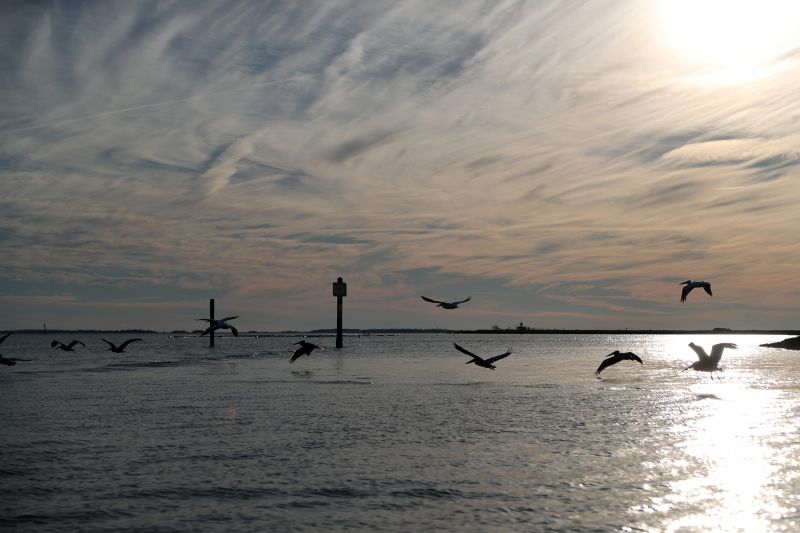
Scientists are sounding the alarm about oceans, but Biden’s budget would slash research data
As scientists scramble to understand why the world’s oceans are in their second year of record-breaking heat, one of the most important programs to gather ocean data in the US is in danger of going dark and cutting off research at a critical time for the planet.
Known as the “eyes” of the oceans off US coasts, the Integrated Ocean Observing System, or IOOS, is a little-known but vital program within the National Oceanic and Atmospheric Administration. It uses over 1,000 monitoring instruments to track currents, water temperature, oxygen levels, acidification, algae and more in the oceans and the Great Lakes, providing data to users inside and outside the federal government.
Its data is used in everything from hurricane forecasting and fisheries to Coast Guard search and rescue – IOOS data can help the Coast Guard narrow down a search area by two-thirds.
Despite President Joe Biden’s ambitious climate goals, his recent budget proposal would slash the program’s funding from $42.5 million to $10 million. That cut – more than 75% – is far steeper than cuts proposed during the Trump administration.
Unless Congress adds more money, that level of funding would devastate the program, researchers say; not only would new instruments not be added, but buoys that have been measuring data for years would literally get pulled out of the water.
“Essentially, we would have to go dark,” said Gerhard Kuska, a marine scientist who heads up the program’s mid-Atlantic region. “That means years of continuous data sets would be in jeopardy of stopping.”
Kuska said his reaction was “shock” when he heard how much Biden’s budget allotted for the program. In his first year in office, Biden’s budget proposed close to $70 million for IOOS.
“It is completely inconsistent with the priorities of this administration,” Kuska said. “These are the kinds of things in their ocean justice and climate policies. It seems very out of character; it seems very illogical and for us, indefensible, to pull the rug out from under us.”
Inexplicable ocean changes
Scientists who work with the IOOS program say it’s an especially critical time to maintain the instruments, which transmit data used to understand changing ocean conditions on short and long timescales.
Ocean data collection is “the only way we can really understand what is happening,” said Kristen Yarincik, executive director of the IOOS Association, the nonprofit that works with NOAA collecting data.
The data from IOOS instruments is also critical for hurricane forecasting and predicting how rapidly a storm could intensify.
“We always talk about the models; well, where do you think the data comes from?” said marine scientist Ellen Prager. “Those are ocean observations, and we improve those forecasts by having them.”
Tracking the impact of sea level rise
Another important function of the program is stationing low-cost flooding sensors in multiple communities around the country, helping them track water levels in real time.
IOOS has added 97 water level stations along the coasts of the Carolinas, Georgia and Florida in the last few years. That is triple the 32 sensors NOAA installed in the Southeast region as part of its National Water Level Observing Network – a sophisticated system that measures sea level rise.
The IOOS water level sensors are cheaper and more rudimentary than NOAA’s instruments, but that means they can be installed in more places, filling the gaps and giving more communities data on flooding in real time.
“We’re just getting to a lot more places,” said Debra Hernandez, executive director of the Southeast regional association running ocean observations.
The benefits to communities are vast, Hernandez said. The sensors can help police and emergency responders track the water’s rise and plan their response, alerting community members if they need to evacuate. They can also let people know when the water has receded and it’s safe to return home.
The sensors can also track just how high the water can get in some areas.
“It gives them a local reality check,” Hernandez said. “What we’re trying to do is to enable communities to tell their own stories, to have data that engineers and town officials can listen to. Sometimes an emotional plea doesn’t make your case as effectively as holding up a graph or chart, something with some scientific rigor.”
Hernandez is worried the water level sensors would be some of the first things to go if IOOS funding is slashed in the budget.
“We would not be able to maintain most of those systems,” Hernandez said. “At least half of the water level sensor network would be compromised with this funding cut.”
